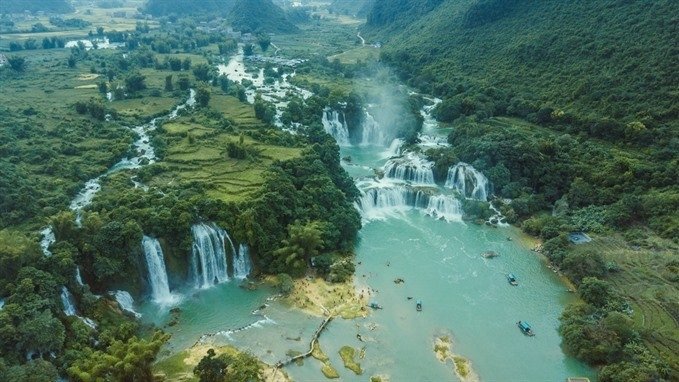


|
|
|
|
Non Nuoc
Cao Bang is about 300km from Hanoi capital city. It covers more than 3,000
sq.km. in the districts of Ha Quang, Tra Linh, Quang Uyen, Trung Khanh, Ha
Lang and Phuc Hoa and part of Hoa An, Nguyen Binh and Thach An districts.
The geopark
is home to fossils, ocean sediment, volcanic rocks, minerals, and especially
karst landscapes, which can give researchers an insight into an
over-500-million-year history of the Earth. It is also well known for rich
biodiversity and many indigenous fauna and flora species.
According
to the Cao Bang provincial Department of Culture, Sports and Tourism, the
province will carry out three tourism routes in the geopark area so as to
attract more tourists.
This is the
second UNESCO-recognised Global Geopark in Vietnam after Dong Van Karst
Plateau, which was recognised in 2010.
Non Nuoc
Cao Bang was established in 2015. In November 2016, Cao Bang submitted a
dossier to UNESCO to seek the global geopark recognition. A survey team of
UNESCO came to the province in July 2017 to make assessment of the park’s
values and conservation work.
The
certificate receiving ceremony will be broadcast live on Vietnam Television
channel VTV1. At the event, the province will announce the historical relic
site on Border Victory in 1950 in Thach An district as a special national
site.
The
organising board also said a series of activities, including an investment,
trade and tourism promotion conference, will take place in Cao Bang city from
November 23 to 27 with the participation of nearly 400 delegates.
|